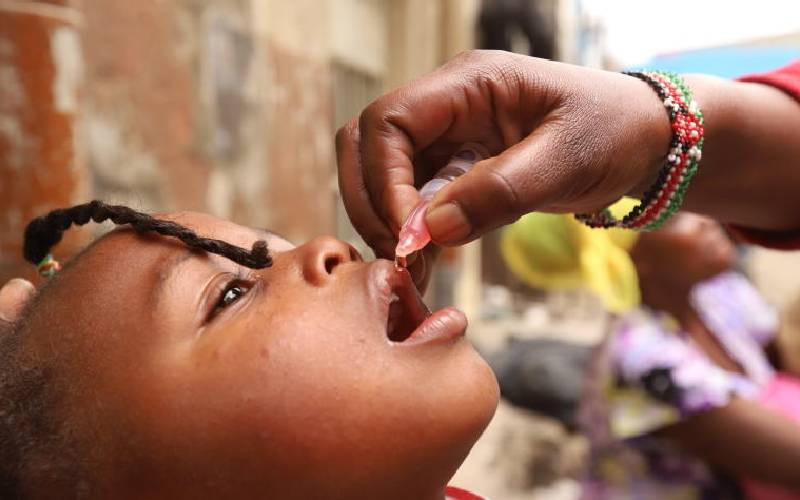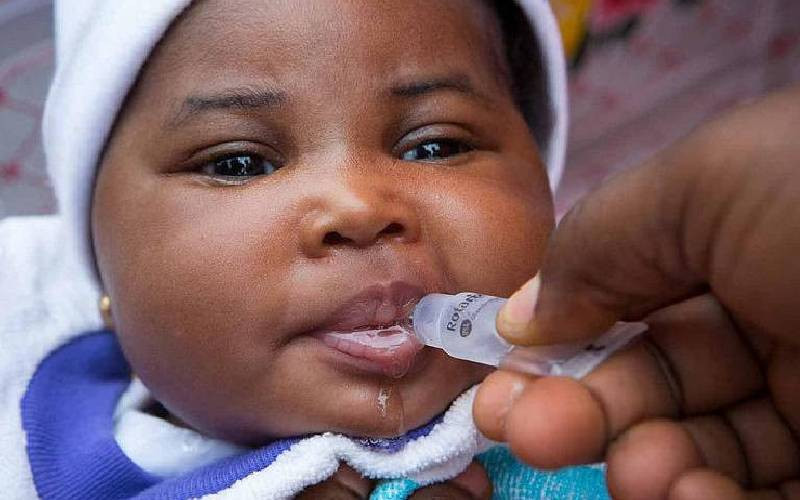
Even among experienced parents, watching a baby go through a painful medical procedure can be depressing, or even traumatising.
“This is my fourth child, and I can’t bear to see her take an injection. Thankfully, the mother handles it so well,” said Charles Mwatela, after driving mother and daughter to a city clinic for immunisation.
Waiting for them in the car, Mwatela said the squirming, cries and screams were too depressing. “I hope the pain can be reduced.”
The number of children going under painful medical procedures in Kenya is just staggering. Last year, for example, a record 1.15 million babies were born in hospitals and exposed to several painful medical procedures, including immunisation.
Tens of thousands of these infants are usually hospitalised in the first days of life requiring additional medical procedures.
For example, a study by Kenya Medical Research Institute (Kemri) in 12 referral county hospitals recorded 80,666 pediatric admissions in a two-year period.
About 30,000 of these were less than a month old and had to be subjected to various painful diagnostic and treatment medical procedures.
Such procedures include injections, wound dressing, heel pricks, vein punctures to draw blood, insertion of nasal devices, lung vacuuming, catheter insertions, and deep injections to draw spinal fluid.
A study led by Obrien Kyololo of Moi University Eldoret found that a hospitalised infant may undergo up to a dozen painful medical procedures per day.
Dr Kyololo and colleagues had followed 200 newborns hospitalised in neonates units in their first seven days of life.
The 200 neonates, the study shows, underwent a total 1,693 painful procedures over the seven-day study period at an average of about three procedures per day per infant.
Out of these procedures, only eight were accompanied by any effort to reduce the pain. Even while it has been established that the presence of the mother helps to pacify an infant, parents were hardly involved.
“Although 37 per cent of the procedures were performed in the presence of parents, in only two was the parent involved in pain relief,” said the study.
Neonates in Kenya, the study concluded, are undergoing many painful medical procedures that are not accompanied by any pain-reducing interventions.
Stay informed. Subscribe to our newsletter
The study co-authored with Dr Bonnie J Stevens of University of Toronto, Canada, and Dr Julia Songok of Moi University appeared in December in the Journal of Paediatric Nursing.
What is clear now is that tens of thousands of infants in Kenya are going through many painful medical procedures with no interventions that are readily available.
“Sometimes the pain is indescribable. I feel it and not once have I broken down in tears,” said Mrs Mwatela.
The Mwatelas have had two preterm babies, hence she should know the pain. Preterm babies, doctors explain, are likely to go through more medical procedures than full-term children.
Explaining her experience to the researchers, one of the study participating mothers said it was awful to see a child go through the ordeal and know it is not the last one.
“You cannot have peace when your baby is in pain; when she is in pain you feel it too, you feel like they are performing the procedure on you.”
Unfortunately, she explained, clinicians were never concerned about pain treatment no matter the number of painful events neonates underwent.
Mothers described the experience of witnessing their infants undergo painful procedures as emotionally and psychologically traumatic.
What happens when a baby is in pain?
Dr Kyololo, in an earlier version of the study, says apart from the immediate distress, too much and repeated pain has serious long-term effects on children.
During the painful procedure, the study explains, the infant is likely to experience a drop in oxygen levels and a rise in pressure around its brain.
In the long term, however, this may lead to a condition called hyperalgesia - an exaggerated pain sensitivity, as well as problems in the nervous system.
For example, an earlier scientific conference of the Kenya Paediatrics Association was told infants circumcised at birth experienced greater pain at immunisation four to six months later.
The Kyololo study says infants should not suffer so much because there are effective pharmaceutical and non-drug interventions known to significantly reduce such pain.
Pain reducing drugs such as lidocaine cream and others are effective and safe for use with infants; however, the research says they are hardly available in local hospitals.
“But alternative low-cost, safe and effective pain treatment strategies, including behavioural, breastfeeding and sweet-tasting solutions exist,” says Kyololo.
The non-use of pain-reducing strategies in infants in Kenya is largely traced back to the attitude of health workers.
Many health workers the report says believe that neonates do not feel pain or tolerate pain well hence do not prioritise its control.
“We are not conscious that these babies are feeling pain, so all you want is to do a procedure and then walk away, and leave the baby screaming. It is not right,” said a participating health worker.
The health workers participating in the study also said they were reluctant to use pain medication for fear of side effects.
Others said they had so much workload that the priority was life-saving procedures, not pain ‘luxuries.’
The health workers said due to the pressure of work and staff shortages there was hardly any time to call in mothers to breastfeed or offer skin to skin comfort and effective pain killers.
Pain-relief for babies
Despite the gloom, babies and mothers may have a good reason to smile. After looking at this and other studies, the Ministry of Health has developed the first neonatal pain management guidelines in Kenya.
“We have generated Kenya’s first neonatal analgesics guidelines for routine procedures, which have been adopted by the Kenyan Ministry of Health,” says a Lancet report published by Kemri last year.
The guidelines say breastfeeding will be the first-line analgesic (pain killer) treatment, initiated at least two minutes before a procedure begins.
If for some reason the infant is unable to breastfeed, it should be fed with 1ml to 2ml of expressed breast milk as the second line pain killer.
“Parental presence during procedures is also recommended, and they may also provide skin-to-skin care, or non-nutritive sucking when possible.”
Non-nutritive sucking consists of sucking fingers, baby pacifiers, or other objects considered normal in child development.
“Breastfeeding should be promoted above all other painkilling strategies during routine procedures in district and county hospitals,” recommends Kemri.
For those unable to breastfeed, Kemri says, expressed breast milk is preferred, but oral sugar solutions are also an adequate alternative. Some music is also recommended.
Recommended pharmaceutical-based painkillers for neonates include topical creams, paracetamol, ibuprofen, morphine, and ketamine.
“This is a step forward and I wish future mothers and their babies less pain. For me this is the last born,” says Mrs Mwatela.
But not everybody is happy with these guidelines, with Dr Adejumoke Idowu Ayede of the University of Ibadan, Nigeria recommending more research to determine their applicability.
 The Standard Group Plc is a
multi-media organization with investments in media platforms spanning newspaper
print operations, television, radio broadcasting, digital and online services. The
Standard Group is recognized as a leading multi-media house in Kenya with a key
influence in matters of national and international interest.
The Standard Group Plc is a
multi-media organization with investments in media platforms spanning newspaper
print operations, television, radio broadcasting, digital and online services. The
Standard Group is recognized as a leading multi-media house in Kenya with a key
influence in matters of national and international interest.
 The Standard Group Plc is a
multi-media organization with investments in media platforms spanning newspaper
print operations, television, radio broadcasting, digital and online services. The
Standard Group is recognized as a leading multi-media house in Kenya with a key
influence in matters of national and international interest.
The Standard Group Plc is a
multi-media organization with investments in media platforms spanning newspaper
print operations, television, radio broadcasting, digital and online services. The
Standard Group is recognized as a leading multi-media house in Kenya with a key
influence in matters of national and international interest.










